But there will be some differences between me and other reviewers. I will not be ranking or scoring cards. Almost all rankings of cards agree on which cards are good and which are bad, taking into consideration either the card in a vacuum or the card in combination with other cards. I'm of the opinion that every card has possibilities, and to ignore those possibilities just because the card does little on its own is to do a disservice to the design. As such, each card I go over will include a list of recommendations of other cards to pair with it in order to improve the card's potential.
That being said, let's start with the beginning: the Core Set Anarch cards.
Noise: Hacker Extraordinaire
Noise is the archetype when you consider the Anarch faction in Netrunner. His goal is to destroy the corporation, one card at a time. He does this by launching a swarm of viruses, which eat away at the corporation's research computers.
While initially Noise was considered one of the weakest runners, he has developed over time into becoming one of the most powerful. Every time a new virus is released, his toolset improves. Plus, he has in-faction access to a console designed specifically to work with viruses. But since we'll be getting to that console later in this article, we'll discuss that more then.
Trivia: Noise is one of the potential murder suspects in the Android board game. Is he a cold-blooded killer, or did he hire the person who did the deed, or is he being framed?
Pair cards: Viruses, Grimoire, Keyhole
Déjà Vu
It's interesting. This is the first form of recursion in the game. While there are now forms of recursion that grant you your entire deck back, or let you install cards from your discard pile, this one is still rather good. For 2 credits, you can get any one card or two virus cards from your discard pile into your hand. Of course, this majorly benefits Noise, but can be used with anybody who utilizes viruses.
Pair cards: Noise, Viruses
Demolition Run
Again, the idea of Anarch being about destroying the corporation is reinforced here. You make a run where you can trash any cards you access, even if the can't normally be trashed, for free. Of course, to get the most use out of this, you'll want to be able to access as many cards as possible during this one run.
Pair cards: Medium, Nerve Agent, HQ Interface, R&D Interface
Stimhack
This card works very well as a surprise. The corporation may think that their server is unassailable due to their large amount of ice, but the 9 temporary credits gives you a great jump in cash. The big downside is the one unpreventable brain damage at the end of the run. Plus, any of those 9 credits you don't use are lost.
Trivia: We have here one of the first reprints of cards from the Netrunner CCG. Originally, this card was called Lucidrine™ Booster Drug.
Pair cards: Personal Workshop
Cyberfeeder
The big thing about recurring credits is that you receive them at the start of your turn. As such, the more recurring credits you spend, the more credits you are keeping in your credit pool, which means those credits can be used for other costs, such as paying for icebreakers, or trashing cards, or boosting link, or whatever you need. In this case, Cyberfeeder does double duty. Its one credit can be used to either pay for installing a virus card or for using icebreakers. And remember, that credit doesn't have to be spent for pumping the icebreaker or breaking a subroutine. It can be used with any paid ability or effect, such as the ability to bypass ice with Femme Fatale or placing virus counters on Darwin.
Pair cards: Viruses, icebreakers
Grimoire
As I alluded to earlier, this is the console that Noise will almost always be running. In fact, this console can work well for anybody. For 3 credits, you gain +2 Memory Units, and whenever you install a virus program, you place a counter onto that program. With Medium or Nerve Agent, it means that you can access an extra card on the first run after installing it. With Imp, you gain the potential to trash an additional card. With Cache you gain an extra credit.
The only problem I have with this card is that the flavor text states that the console belongs to Whizzard, and yet it works much better for Noise.
Pair cards: Noise, viruses, anyone who needs extra MU
Corroder
Quite possibly the standard by which all Fracter icebreakers are judged by. It's cheap to install, and it has the highest efficiency, costing only 1 credit to increase strength or break a subroutine. The trade off here is that it starts with only 2 strength, but most of the common barrier ice you will see will be within easy reach of this program.
Trivia: We have a potential reprint here. Hammer from Netrunner CCG has the exact same statisticts as Corroder, but since the Noisy mechanic isn't in this version, it's not an exact copy.
Pair cards: Datasucker, Cyberfeeder, Dyson Fractal Generator
Datasucker
Again, this also works to define the Anarch idea. This program builds up counters each time you make a successful run on a central server (R&D, HQ, or Archives,) and each counter can be spent during an encounter with a piece of ice to lower the strength of that ice by 1 for the remainder of the encounter. This can be used as an alternate economy, letting you save your credits, or it can be used for one of the most fearsome options Anarchs have in their arsenal: ice destruction.
Pair cards: Grimoire, Parasite
Djinn
The very first Daemon in the game. In addition to giving you extra space for storing programs that aren't icebreakers, Djinn allows you to search your deck (sometimes called tutoring, from a series of cards in Magic: the Gathering that let you search your deck) for a virus card, and then add it to your hand. This makes Djinn a good place to store your viruses, but take care to protect it, as if it is trashed, all the hosted programs are trashed as well.
Pair cards: Noise, viruses, Cyberfeeder
Medium
The first option for multi-access in Runner. Each counter on it after the first allows you to access an additional card from R&D when you access R&D. Also, you place a counter on it when you make a
successful run on R&D, so the more times you make successful runs on R&D, the more cards you can see. Plus, the ability is optional, so you are not forced to look at additional cards while using this, in case you fear that there may be a Snare! waiting for you.
Oh, and if you have multiple Mediums installed simultaneously, then both apply, If they both have 2 counters on each of them, you can access up to 3 cards.
Trivia: Another reprint from Netrunner CCG. This one was originally called Highlighter.
Pair cards: Noise, Grimoire, Cyberfeeder
Mimic
Kind of another staple of Anarch: the fixed strength breaker. For 3 credits, you can break any sentry ice that has strength of 3 or lower. But with Datasucker in play, you could break sentries with even higher strength than that.
Trivia: Another reprint, sort of. The Netrunner CCG card Codeslinger has the exact same statistics, except for its 7 credit install cost. Aren't you glad Mimic is so much cheaper? Also, the flavor text is a reference to November 5th, Guy Fawkes' Day, where a group conspired to blow up the British Parliment. The artwork references the masks the conspirators wore, which have since been adopted by hacker group Anonymous.
Pair cards: Datasucker, Parasite, The Personal Touch, Dinosaurus, Net-Ready Eyes
Parasite
Once again, reinforcing the Anarch idea of destruction. This card is attached to a piece of rezzed ice and slowly drains the strength of that ice. And if that piece of ice is reduced to 0 strength, then Parasite trashes it. Just remember that since it has to be hosted onto a piece of ice, you can't host it on your Djinn or other Daemon at the same time. The sheer destructive power of this card combined with the ease of recursion now available are what resulted in this card being put onto the NAPD Most Wanted List, effectively making it an additional influence out of faction, or 1 influence in Anarch.
Pair cards: Noise, Déjà Vu, Datasucker, Clone Chip
Wyrm
You don't actually see Wyrm that much. While it is cheap to install and its status as an AI icebreaker means it can deal with anything, the main problem is in its costs to use. First, in order to interact with a piece of ice, you have to pump Wyrm's strength up to match that piece of ice. Then, you have to use Wyrm to reduced that piece of ice down to 0 strength. Finally, you can now spend 3 credits per subroutine you wish to break on that piece of ice. As such, Wyrm is more often used in conjunction with Parasite for ice destruction.
Pair cards: Datasucker, Parasite, Cyberfeeder
Yog.0
Another fixed strength icebreaker for Anarchs, this time breaking code gates. Alone, this lets you break any 3 strength or lower code gate for free, making a lot of code gates useless. But combined with reducing ice strength or boosting this cards strength and you can make even more code gates less than stellar. The sheer power of this ability led to this card being placed onto the NAPD Most Wanted List.
Trivia: Another direct reprint from Netrunner CCG, where it was originally called Tinweasel. Also, a possible H.P. Lovecraft reference to Yog-Sothoth, known as the keeper of gates.
Pair cards: Datasucker, Dinosaurus, Net-Ready Eyes
Ice Carver
Again, reinforcing the archetype of weakening and potentially destroying ice. For 3 credits, all ice is encounted with strength lowered by 1. This means that Parasite needs 1 fewer counter to destroy a piece of ice. Plus, it improves the utility of the fixed strength breaker suite. Just be aware that this resource is unique, so you can't have more than one copy installed.
Trivia: Not exactly a direct reprint from Netrunner CCG, although that game does have a program called Clown with the exact same effect. But Clown isn't unique, so you could have multiple copies of it installed.
Pairs with: Parasite, fixed-strength icebreakers
Wyldside
The main thing about this card is click efficiency. The more you can get out of each click, the more potential advantage you can get. Normally, in order to draw two cards, you would have to spend two clicks. But with Wyldside, at the cost of losing a click, you get to draw two cards at the start of your turn. If you can keep drawing cards, that can turn into a massive advantage.
Update: As of July 12, 2016, Wyldside is now on the NAPD Most Wanted List. So if you're an Anarch player, keeping this in will mean having to make hard choices on your influence.
Trivia: A nightclub on the moon catering to genetically modified humanoids with animal features. Also, where the aforementioned blog derived its name from.
Pair cards: Adjusted Chronotype, Faust
And that does it for the Core Set Anarch cards. Next time, we'll examine the Core Set Criminal cards.
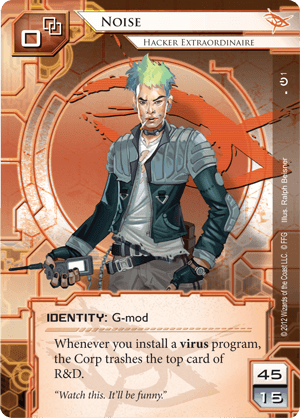
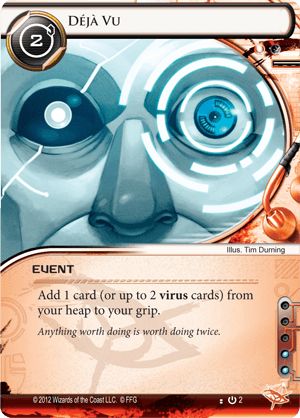
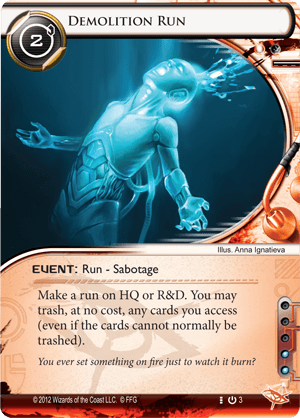
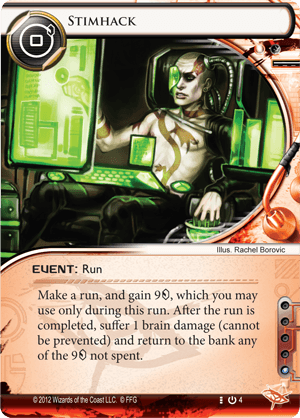
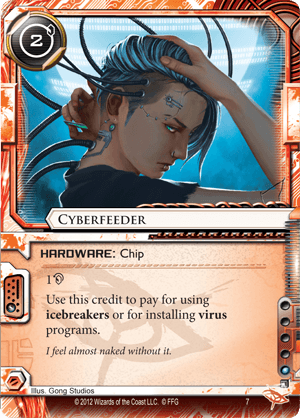
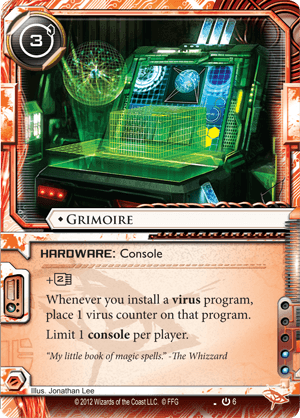
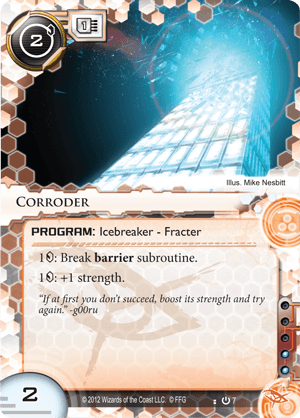
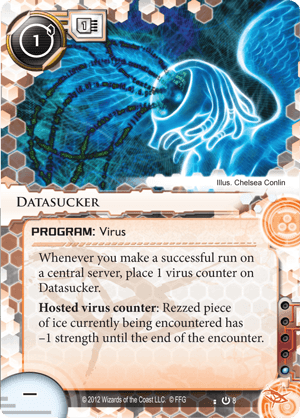
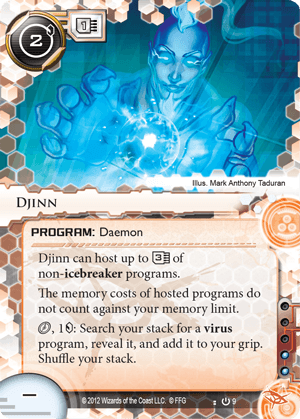
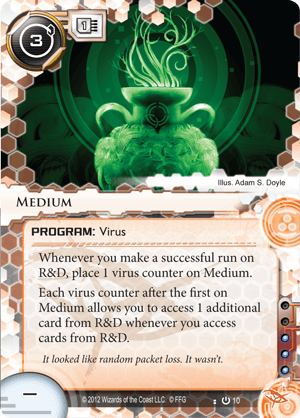
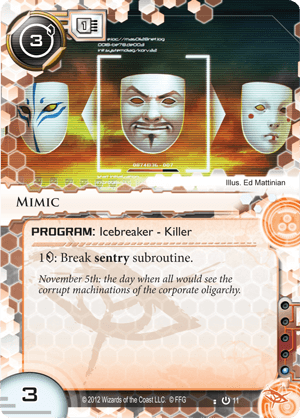
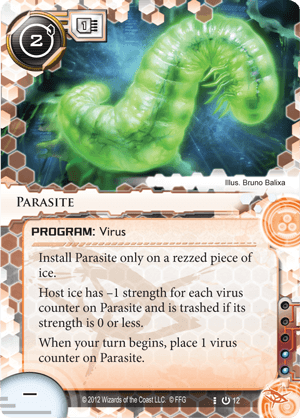
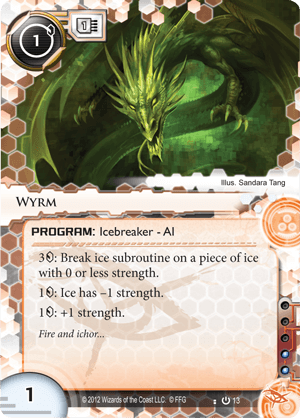
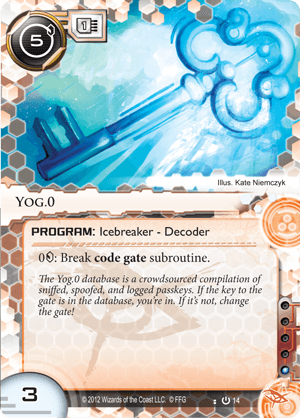
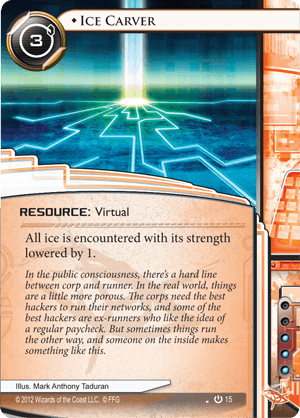
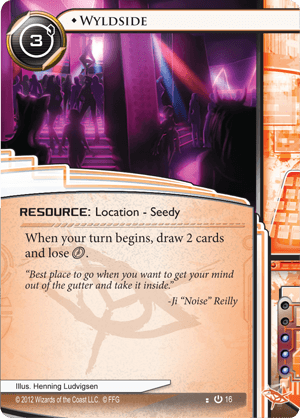
No comments:
Post a Comment